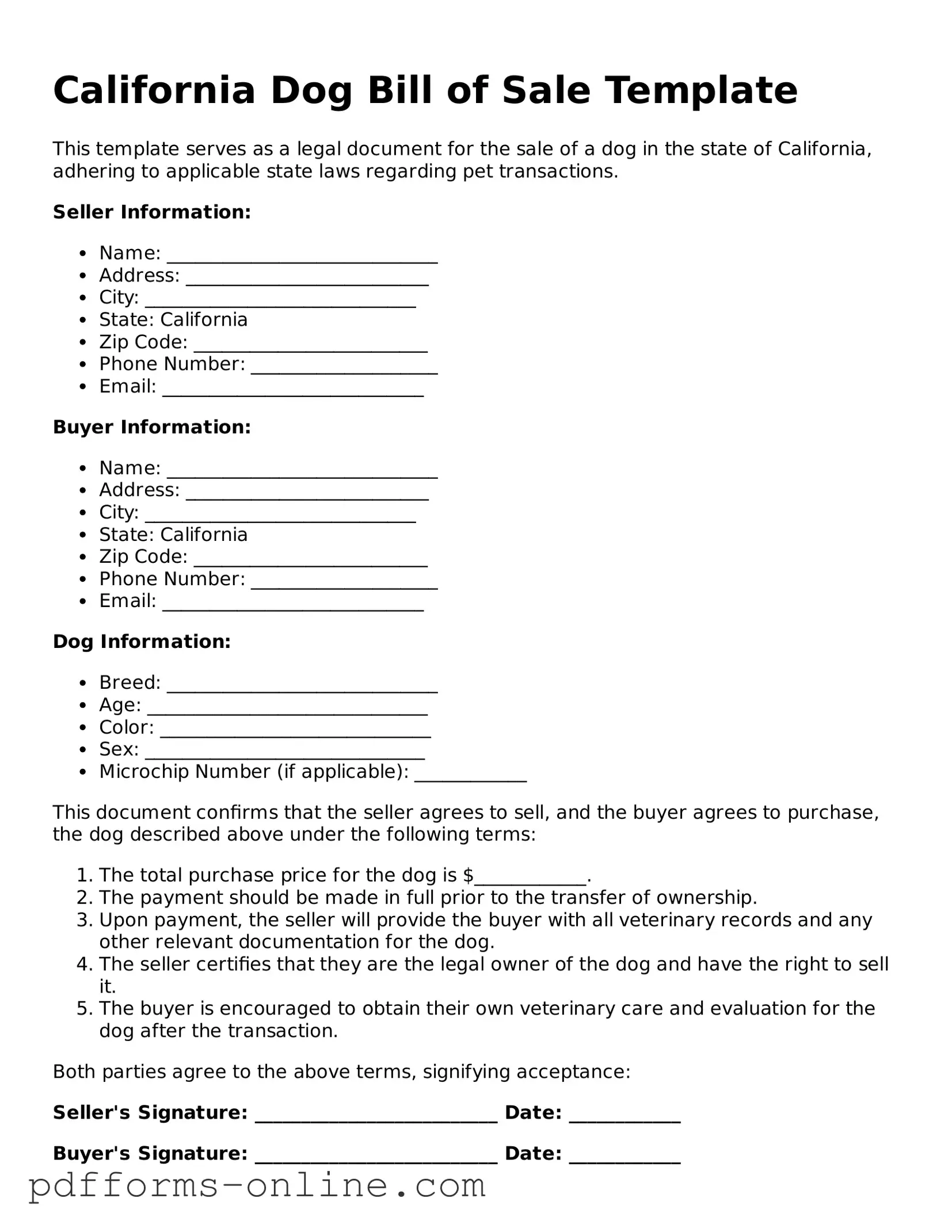California Dog Bill of Sale Template
This template serves as a legal document for the sale of a dog in the state of California, adhering to applicable state laws regarding pet transactions.
Seller Information:
- Name: _____________________________
- Address: __________________________
- City: _____________________________
- State: California
- Zip Code: _________________________
- Phone Number: ____________________
- Email: ____________________________
Buyer Information:
- Name: _____________________________
- Address: __________________________
- City: _____________________________
- State: California
- Zip Code: _________________________
- Phone Number: ____________________
- Email: ____________________________
Dog Information:
- Breed: _____________________________
- Age: ______________________________
- Color: _____________________________
- Sex: ______________________________
- Microchip Number (if applicable): ____________
This document confirms that the seller agrees to sell, and the buyer agrees to purchase, the dog described above under the following terms:
- The total purchase price for the dog is $____________.
- The payment should be made in full prior to the transfer of ownership.
- Upon payment, the seller will provide the buyer with all veterinary records and any other relevant documentation for the dog.
- The seller certifies that they are the legal owner of the dog and have the right to sell it.
- The buyer is encouraged to obtain their own veterinary care and evaluation for the dog after the transaction.
Both parties agree to the above terms, signifying acceptance:
Seller's Signature: __________________________ Date: ____________
Buyer's Signature: __________________________ Date: ____________
This Bill of Sale is effective as of the date signed above. A copy will be retained by both the seller and buyer for their records.
